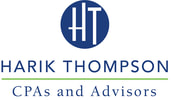|
Every so often a dramatic case of financial fraud makes the headlines because of the sheer amount of money involved. But, on average, companies with fewer than 100 employees suffer the largest median loss and 42% of fraud cases are caused by a lack of internal controls. Internal fraud exacts a high cost in terms of financial losses (only about 39% of stolen monies are recovered), company reputation and company culture. No one wants to think that someone at their company is capable of fraud, but most cases of frauds are perpetrated by someone at the managerial level or higher. Many involve more than one person.
Common Types of Internal Fraud Following are the five common types of internal fraud:
Controls to Prevent Fraud Having the right controls in place can prevent fraud. Most internal controls fall into the following categories:
For more information about the internal controls necessary to prevent fraud, contact us today. Comments are closed.
|
Newsletter articles are posted every 2 weeks. If you would like to have our e-newsletter delivered directly to your inbox, please sign up. Your information is confidential; you can unsubscribe at any time. Subscribe. Categories
All
|
Proudly powered by Weebly

 RSS Feed
RSS Feed